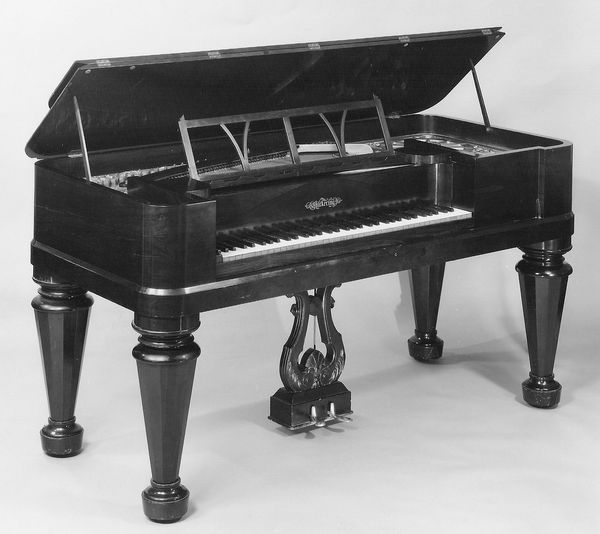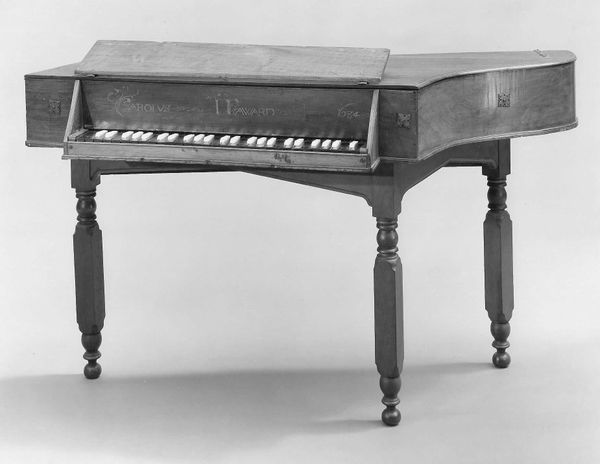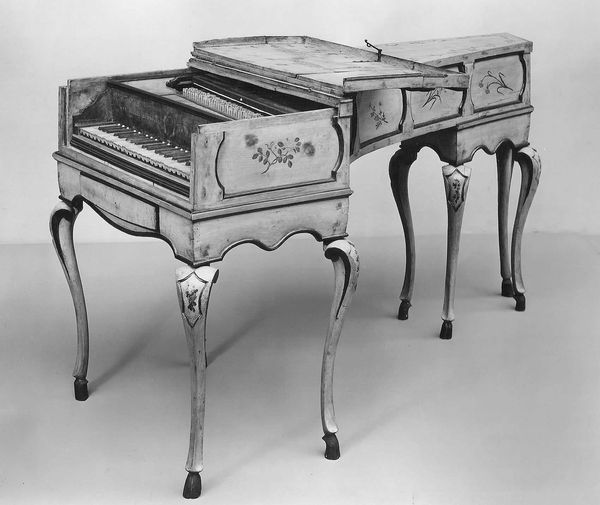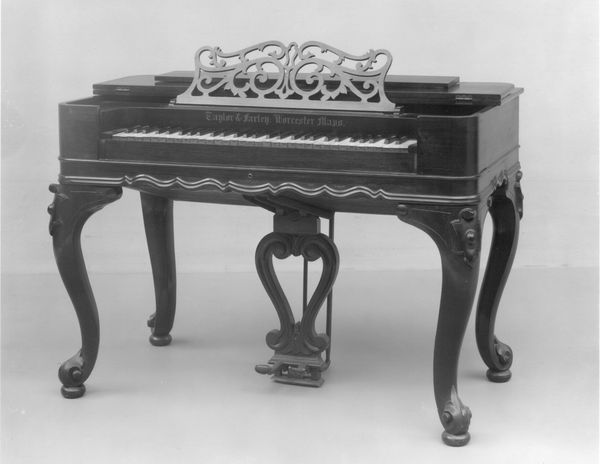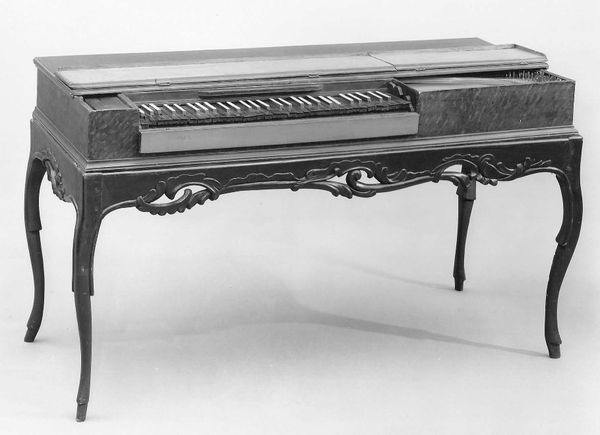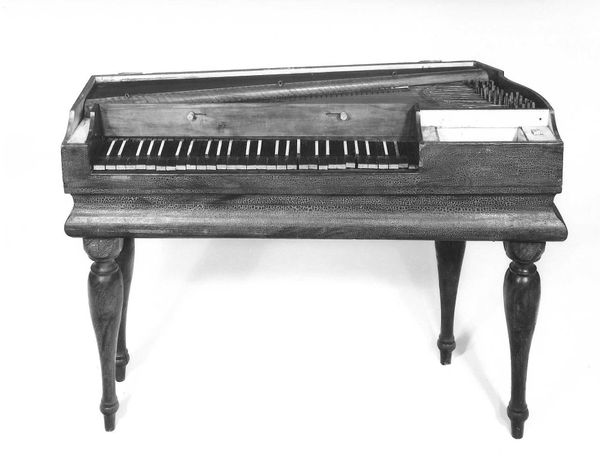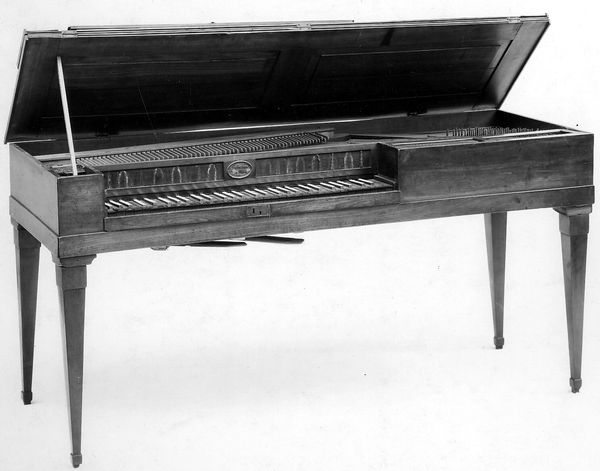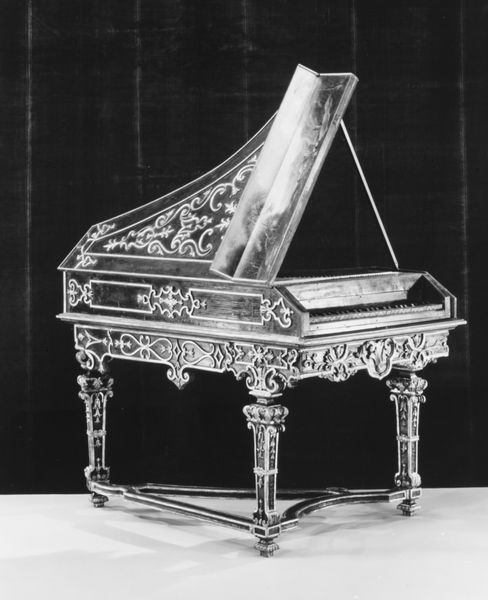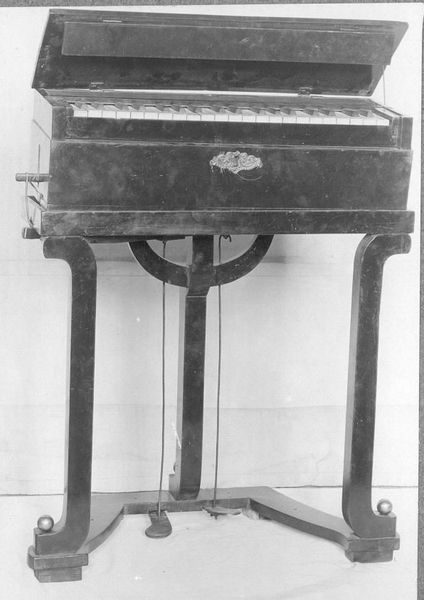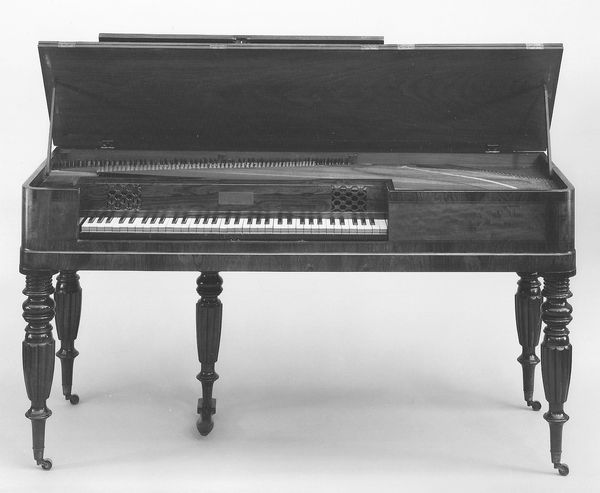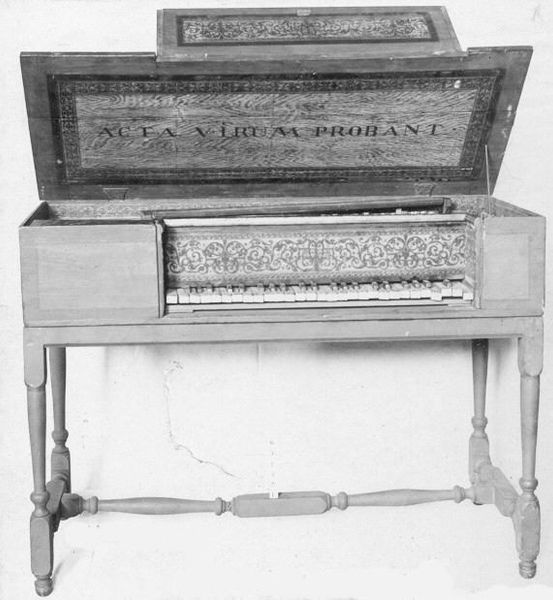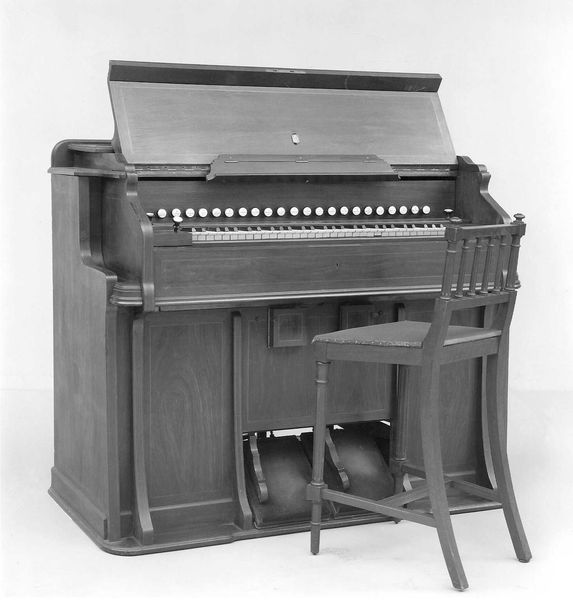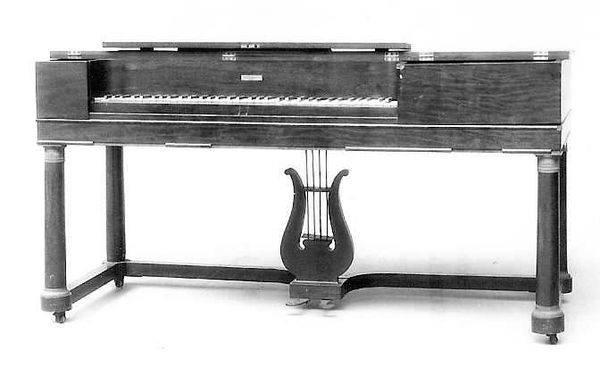
Copyright: Public Domain
Curator: Editor: Here we have a harmonium made sometime between 1840 and 1860 by F. Kaufmann & Sohn, housed here at the Met. It's this intriguing blend of metal and woodwork. I’m struck by how this functional object becomes a decorative statement, yet still retains evidence of intense human labor in its fabrication. What catches your eye? Curator: Precisely. Let’s consider the conditions of its making. What socio-economic context allowed for the sourcing of materials – the wood, the metal – and the skilled labor to assemble them into this intricate form? Each material choice implies a network of production, trade, and consumption. Were these materials locally sourced, or imported, and what does that tell us about the Kaufmann firm? Editor: I hadn’t thought of the implications of simply sourcing the materials. Were harmoniums common at the time, or were they luxury items? Curator: That's the key question! Harmoniums gained popularity during this period, especially within middle-class homes. The rise of industrialization allowed for greater efficiency in production, influencing the affordability and availability of such instruments. To truly understand the harmonium, we need to deconstruct it, examining the history embedded in each material and the hands that shaped them. How might its existence also speak to gender roles in the 19th century? Editor: So, it's not just a beautiful musical instrument, but a window into the economics and social dynamics of its time. Fascinating. I will think about this work beyond its surface from now on. Curator: Indeed. By looking closely at the means of production, we gain a much richer understanding of its cultural significance. It is amazing what materiality tells about history, society, and individuals.
Comments
No comments
Be the first to comment and join the conversation on the ultimate creative platform.
